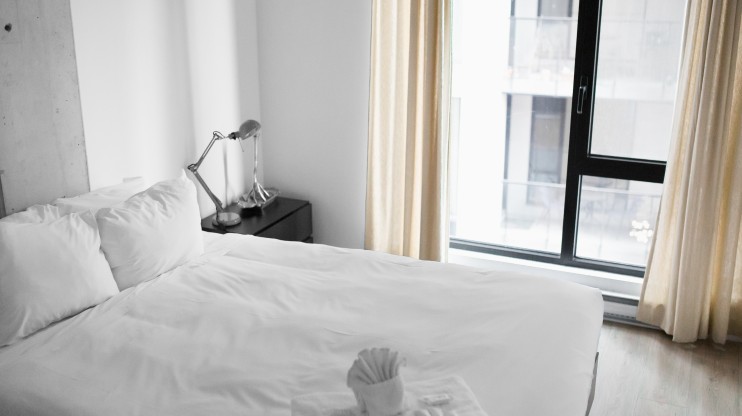Have Questions? We’re Here to Help!
Discover more about improving facility performance while reducing costs.

Let’s set the scene: it’s a bitter cold, winter afternoon in Chicago. Snow is blowing in off Lake Michigan and temperatures have hovered at just below 30 degrees for weeks. You arrive for a work conference and check into your hotel. You confirm your rewards account, produce a credit card and get your room key. Gathering your bags and taking the elevator up, you swipe into your hotel room and you’re greeted with a pleasant 65-degree room temperature on its way to 68. You hardly notice, to be honest, since 68 is the standard set for every room in this hotel. What you didn’t know was that prior to your check-in, your room was operating at an energy efficient, if chilly, 60 degrees.
Controlled by the operations team’s Energy Management System (EMS), every room in this hotel communicates with the front desk’s Property Management System (PMS) which enables the facilities managers to adjust occupancy-based temperature standards. What this means is when the PMS has a room marked as vacant, a preset temperature will be pushed to that room’s integrated thermostat.
Similarly, when a guest checks in and a room is moved to occupied, the EMS sets the thermostat. EMS for hotels typically allow for a “VIP setting” as well, which enables facility personnel to extend the preset temperature range for a VIP guest or override the presets. While the PMS to EMS integration can be hugely beneficial to hotel operations, the EMS can also integrate into a larger hotel BMS or even franchise-wide system.
This is the subtle – but powerful – control made available when the PMS talks to the EMS.
In the example above, the room’s initial temperature set point was 60 degrees. When that room was marked to occupied, as the guest checked in, the temperature started to climb. By the time the guest arrived in his room, the thermostat had risen 5 degrees and was on its way up to hit the 68 degree preset. To maintain efficiency, the thermostat’s range will remain within 8 degrees.
There are many tactics hotels and hospitality facilities can take to lower energy use, including LED lighting retrofits and HVAC upgrades. Energy Management Systems provide control over these other systems for additional efficiencies. When Property Management Systems (PMS) communicate with Energy Management Systems (EMS), granular control is at your fingertips.
Discover more about improving facility performance while reducing costs.